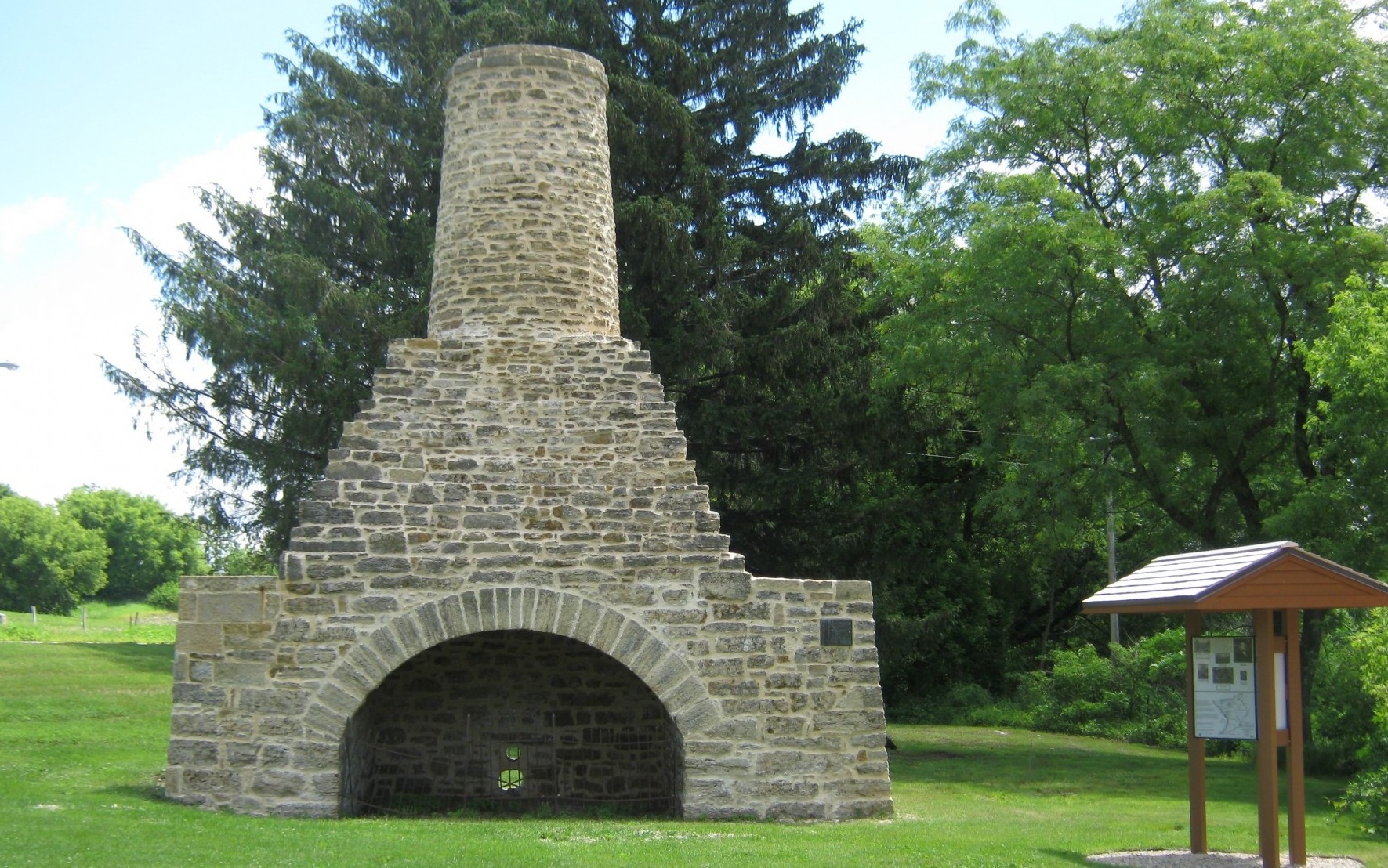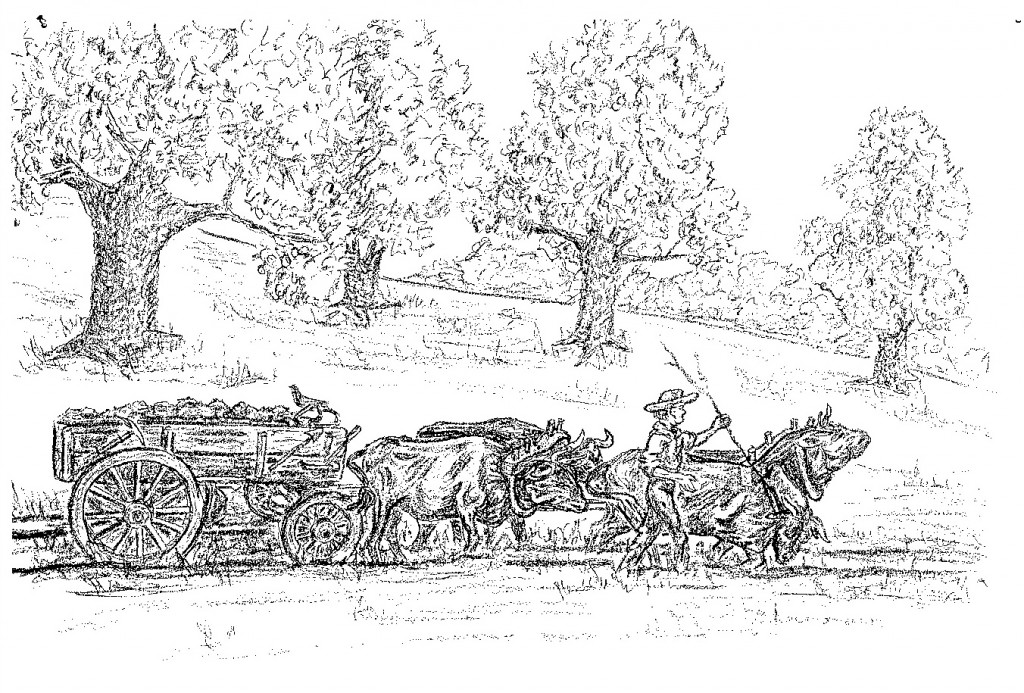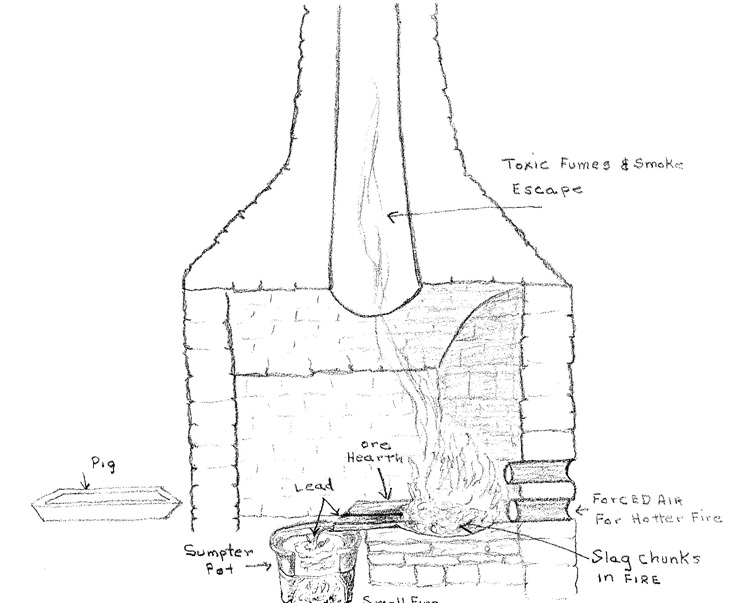
The slag furnace was constructed in 1876 by Thomas Carkeek and Samuel Cornelius. The company of Bennett, Hoskins and George provided the funding for the construction. It was quite high tech for the times. It was the result of these men pondering how to profit from the unsightly tailings piles of partially processed lead embedded in crushed limestone remnants from early mining in Iowa County. The furnace used new ways to salvage more lead mineral from the slag. Mr. William Berryman was the operator of the furnace.

Word of the success of the Bennett, Hoskins and George slag furnace system spread across the lead region. The company would buy slag from several area furnaces and then re-melt it to extract more lead ore. The slag was hauled to the furnace from 18 area smelters and from the surrounding region as far away as Galena, IL. Throughout the period of its operation, the plant was an important center of activity, The slag furnace was successful from 1876 to 1890.
“Each day that the furnace was used, a fireplace of limestone was built within the present standing arch. Clean sand was placed therein. As the fire gained headway, which was located in a frame addition attached to the east side of the furnace, was turned on. When sufficient heat had been created, alternate shovels full of coke, slag and charcoal were thrown into the roaring flames.” (Dodgeville Chronicle, January 6,1949)

The slag furnace was used only in the summer months and only was fired up between noon and midnight. The morning was spent rebuilding the hearth, as a new one was built each day that the furnace was fired up.
Because the lead was heavier than the waste, it fell into the waiting receptacle while the waste flowed with water which cooled the waste material before it was discarded. (The Wisconsin Lead Region by Joseph Schafer, State Historical Society of Wisconsin, 1932, p.104)

The slag furnace has been saved due to the foresight and perseverance of the Dodgeville Woman’s Club. This dedicated group recognized the historical importance of the structure. In 1934, a plaque was placed on the structure. About this same time, a fence was constructed to keep the cows out at a cost of $15.00. In 1938, it was purchased by the Dodgeville Woman’s Club from the Wisconsin Zinc Flotation Company for $1.00. Repairs were made on the chimney in 1967 and 1983. In 1996, the Dodgeville Woman’s Club deeded the structure back to the City of Dodgeville. The City of Dodgeville again repaired the furnace in 2011 and also added a sign explaining it’s historical significance.